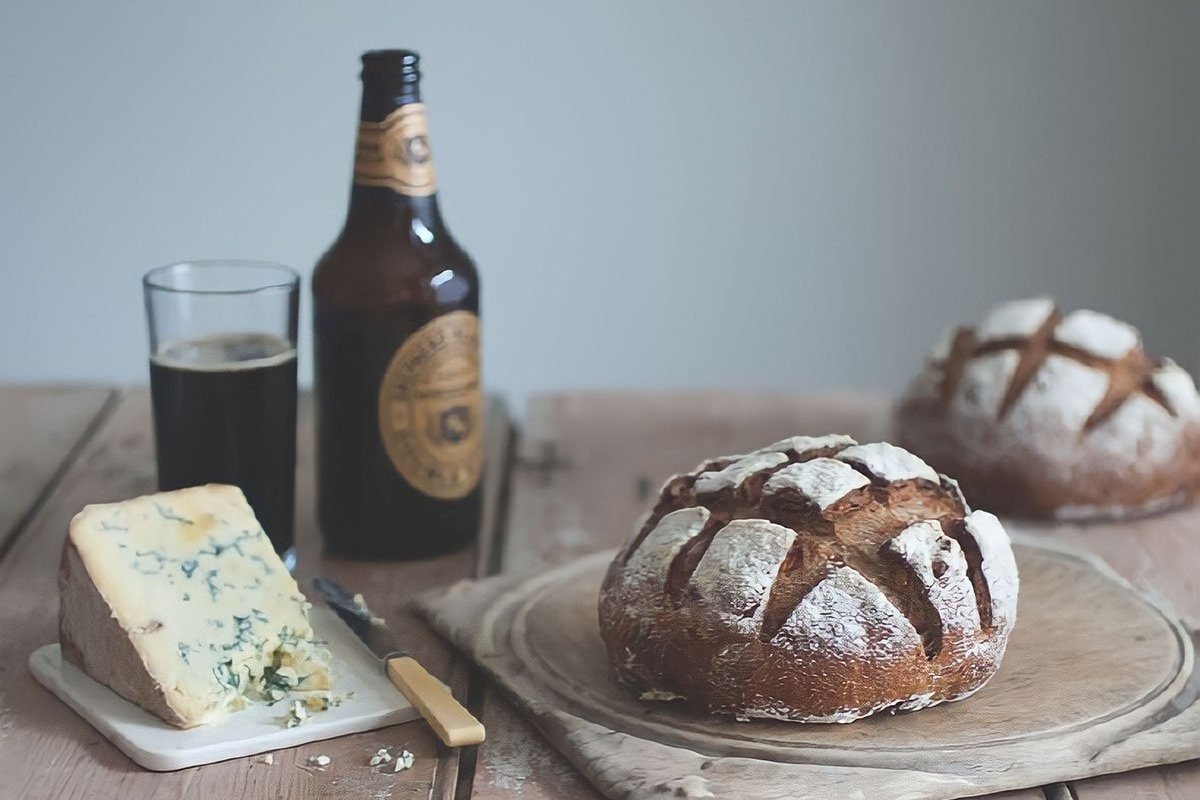Advertisement
Consuming Passions: Cinnamon
18 June 2023 · Consuming passions
Adam Hoss is an Ohio-based author, who has published two novels, the most recent being One Hundred Below, a murder mystery set at Antarctic research station. He is also a keen cook and a ckbk subscriber. In this contribution to our Consuming Passions series, Adam describes his love for cinnamon, one of the most versatile spices in any cook’s spice cabinet.
By Adam Hoss
Memory
I was blessed to come of age in a culinary household. My father was an ambitious home chef who dabbled in dozens of world cuisines, and scents of faraway lands were familiar guests in our kitchen. But one treat reigns supreme in memories from my childhood: those magical winter evenings when Grandma would visit with a fresh loaf of her famous cinnamon swirl bread. Oozing with gobs of sugary delight, the delicacy was not long for this world once it came within reach. My brother and I made short work of the loaf, the incriminating evidence sticking to our hands no matter how hard we tried to lick our fingers clean.
Cinnamon is a potent evoker of memory. In a 2022 survey of 2,000 American adults, 58% of participants identified cinnamon as the most nostalgic flavor. In the West, the spice is associated primarily with desserts. But relegating cinnamon to the sweets aisle is to deny its tremendous versatility as an ingredient, and the starring role it has played in the culinary history of the world.
One does not need to probe deep to find pairings of cinnamon and nostalgia. Tessa Kiros writes that Cinnamon & Cardamom Buns “were always a part of my childhood. They are found everywhere in Finland — and probably all over Scandinavia — in tea rooms and houses.” Sumayya Usmani created her Goodbye Biryani in honor of her grandmother. But perhaps the most poignant stories of cinnamon is found in Pomegranates & Artichokes, where Saghar Setareh writes of her great-grandmother’s nazr, or vow, to cook Sholeh Zard, a Persian rice pudding, every year on the anniversary of her grandson’s birth. Cinnamon plays a starring role in Setareh’s family recipe for this dish, both visually and on the palate.
Setareh laments that, these days in Iran, “fewer people prepare large amounts of food as nazri for family, friends and total strangers… Decades of economic sanctions, mismanagement and corruption have taken more than just bread from the Iranian table — and those who are lucky are left with only the hunger for the human interactions that not so long ago were provided through dance and music parties with family and friends, and in rituals of feeding a large crowd in the name of a saint, even if just once a year.”
Cinnamon frequently appears in East Asian dishes as well. Sharon Wee, in Growing Up in a Nonya Kitchen, recounts how her mother would only “accept top-quality brandy for her fruit cake. That meant stashing away all those expensive bottles of Hennessy VSOP which my father would get from his business clients at Christmas-time.” The dish, with British influence, is customarily served during Chinese New Year. “I hope that you make this cake for those you love,” Wee writes, “and in turn, those who receive it will eat it with tremendous joy.”
Tradition
In Exodus 30:23, cinnamon is one of four “fine spices” which God instructs Moses to combine in a sacred anointing oil: “a fragrant blend, the work of a perfumer.” It’s fitting, then, that cinnamon is one of the 41 ingredients in the aptly-named Noah’s Ark Pudding, a simplified version of which appears in David Dale and Somer Sivrioglu’s Anatolia. “This could well be the oldest pudding in the world,” the authors write. “To celebrate his return to dry land after forty days on the water, Noah cooked up all the remaining supplies in the ark—nuts, pulses and dried fruits, but definitely no animals—and shared the resulting stew with everybody who had survived the flood.”
In the ancient world, cinnamon was more precious than gold. It reached the West via Arabic traders, who kept its origins wrapped in myth. Theophrastus, in the 5th century BCE, wrote of the tall tales:
they say it grows in valleys where there are snakes with a deadly bite, so they protect their hands and feet when they go down to collect it. When they have brought it out they divide it into three portions and draw lots for them with the sun, and whichever portion the sun wins they leave behind. As soon as they leave it, they say, they see it burst into flame. This is of course fantasy.
Emperor Nero heaped a year’s supply of Rome’s cinnamon on the funeral pyre of his wife Poppaea Sabina to mask the stench of her burning body. The Ancient Egyptians used it in their embalming process. In Ancient China, the spice was likewise precious, and often given by emperors as a diplomatic gift to visiting dignitaries.
Cinnamon reached Europe via conquest. The Portuguese seized Ceylon in 1505 and “it was mainly for the cinnamon that they proceeded to occupy the island.” By the time the Dutch took over the cinnamon monopoly in 1636, demand for the spice threatened to exhaust the island’s supply. In The Nutmeg Trail, Eleanor Ford shares a handwritten recipe from 14th century Venice for cinnamon-scented chicken cooked with almond milk and dates. “At the time,” Ford writes, “the city lay at the end of the fabled spice route, the European hub of spices and silks arriving from the East. Just as Venetian art and architecture drew on Islamic influence, so too does this sweetly spiced braise.”
Cinnamon was all the rage in Europe through the Renaissance and Enlightenment. Regula Ysewijn shares a 1789 German recipe for Zimtwaffeln, cinnamon waffles, along with a story about a family waffle iron dating back generations. Marlena Spieler relates a recipe “allegedly brought to north America from Russia by a Jewish migrant fleeing the troubles in search of a better life” which “simply oozes old country charm.” The resulting noodle kugel, flavored with apple and cinnamon, smells as nostalgic as it tastes.
Craft
What’s labeled cinnamon on grocery store shelves is, in fact, one of two spices. True cinnamon grows primarily in Sri Lanka and is often labeled Ceylon Cinnamon, after the British name for the island. Cassia is a term applied to a a very similar spice from Indonesia, China and Vietnam.
The key to pairing spices with cinnamon is to ask what qualities you aim to enhance. In The Science of Spice, Stuart Farrimond teases out the chemical differences between cinnamon and cassia. Both spices contain the aromatic, warming chemical cinnamaldehyde, which can be enhanced with other earthy and warming spices such as cumin, star anise and ginger.
Such a combination leads to the perhaps unexpected success of Denis Cotter’s braised spinach parcels of feta in a beetroot cream. The cinnamon’s earthiness is drawn out by ginger and star anise, and this warmth makes for a perfect accent to an earthy vegetable like beetroot.

The author’s “lily pad” interpretation of Denis Cotter’s spinach parcels, from the The Café Paradiso Cookbook
Unlike true cinnamon, cassia has inherent sweetness from the chemical coumarin. For that reason, nutmeg and vanilla pair better with cassia than cinnamon. John Gregory-Smith’s recipe for Mexican Cinnamon Peaches, which calls for vanilla ice cream as a pairing, would benefit from the use cassia, as would Anne Willan’s stupendous Salmon in Disguise, a showstopper recipe to trot out when you want to seriously impress guests.
While cassia is sweeter than cinnamon, it lacks cinnamon’s floral qualities. Cardamom is particularly adept at drawing out these qualities from the spice. This is useful for floral teas, such as Bree Hutchins’s Spicy Ceylon Tea from her book Hidden Kitchens of Sri Lanka. Being a traditional recipe from Sri Lanka, use of Ceylon cinnamon is a must.
Allspice and ginger are excellent pairings with either cinnamon or cassia, as they both emphasize the warming qualities of the spices. In The Jewelled Kitchen, Bethany Kehdy presents her recipe for Spicy Snapper in the Tripoli Manner, which receives pleasant warmth from allspice. It also uses cloves, which can enhance the aroma of cinnamon. Cloves also make an appearance alongside cinnamon and the floral-enhancing cardamom in the Ugandan dish Beef and Coconut Macaroni from Yasmin Alibhai-Brown’s The Settler’s Cookbook.
Cinnamon is not often associated with Japanese cuisine, but its compatibility with ginger make it a surprise star of the show in Maori Murota’s Kara-Age (Japanese fried chicken) recipe, which uses sugar to compensate for true cinnamon’s lack of inherent sweetness. Cinnamon is also utilized to nice effect in Nic Watt’s Baby Back Ribs which he serves at his Japanese restaurant Masu in Auckland.

For me, cinnamon’s nostalgia is most potent in memories of Grandma’s kitchen, the wood-burning stove heating the house, her seriously obese cat watching spirals of snow falling through the bay windows, the hum of conversation from adults buzzed on eggnog radiating from the living room. But its reach spans the globe, from the kitchens of New Dehli to Kampala to Mexico City. It’s easy to understand why cinnamon was once worth its weight in gold. All it takes to begin creating magic is an understanding of its properties, and which features you’re trying to showcase.
Try these cinnamon recipes…
More Consuming Passions
Di Murrell enjoys the many delicious uses for the humble fish, whether fresh or tinned
Drinks writer Laura Hadland on the darkest and most intensely flavored of beer styles, with countless culinary uses
Omani food writer Dina Macki, known as The Pomegranate Queen on Instagram, celebrates her favorite fruit
Sign up for ckbk's weekly email newsletter
Advertisement







